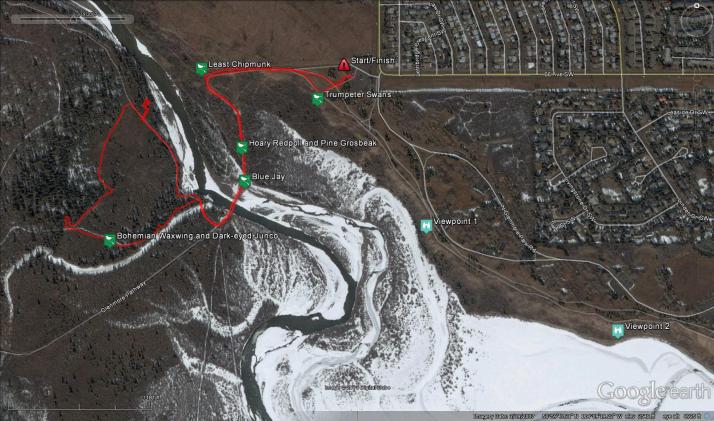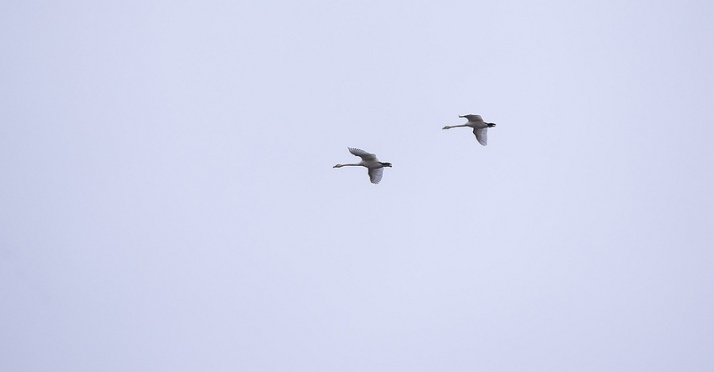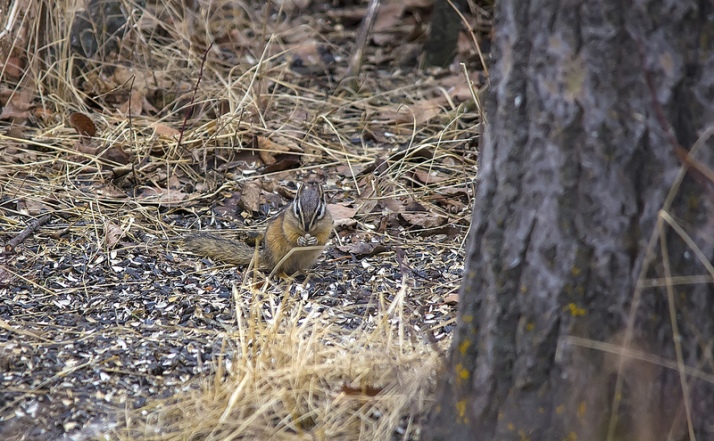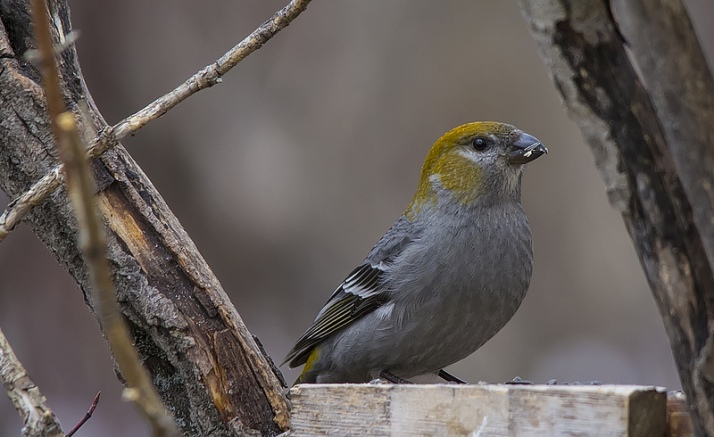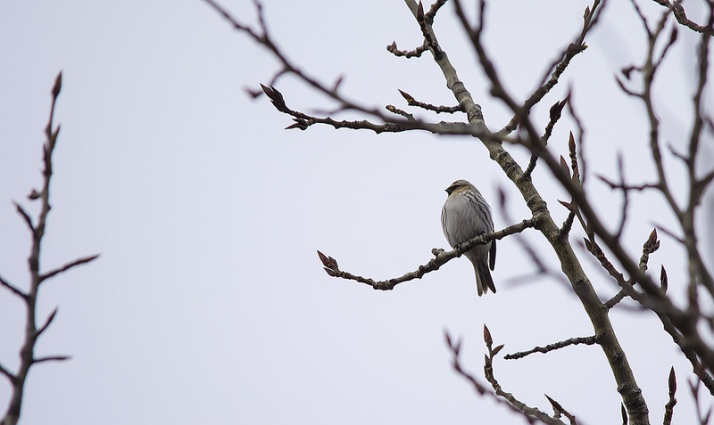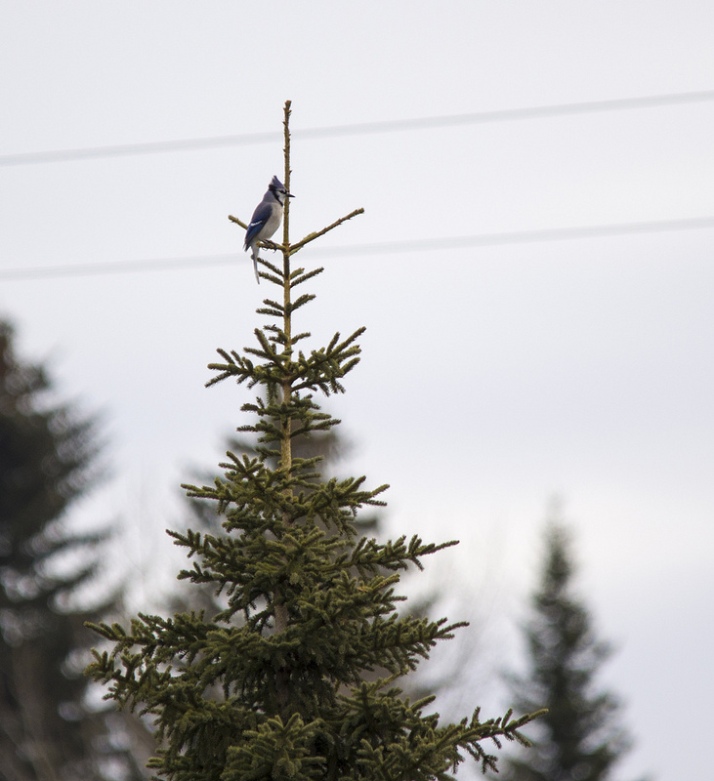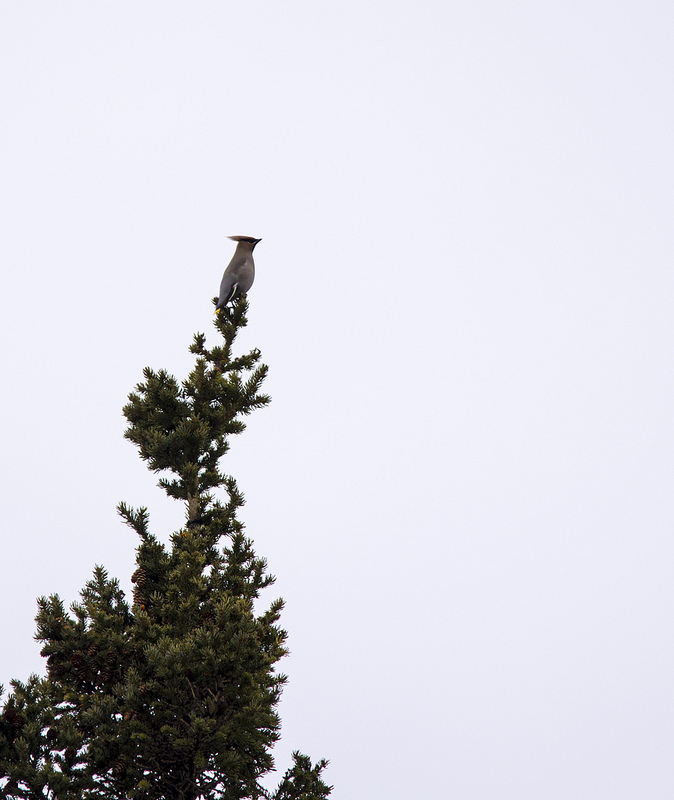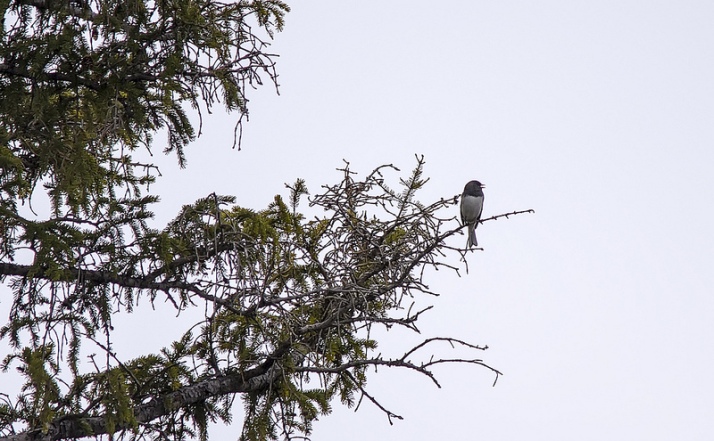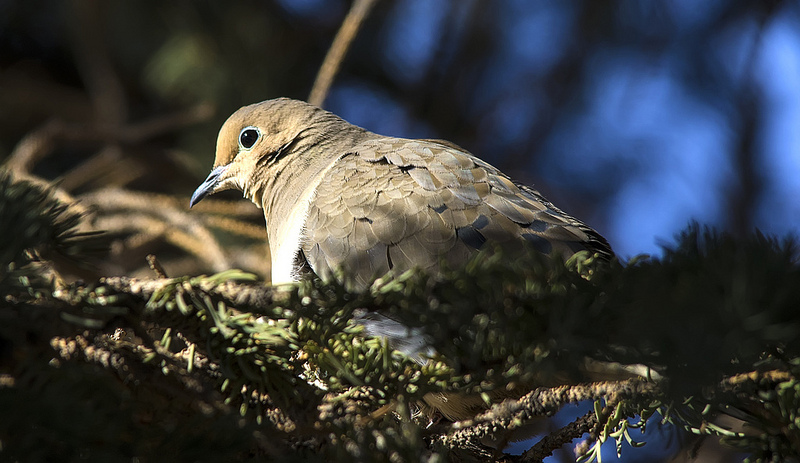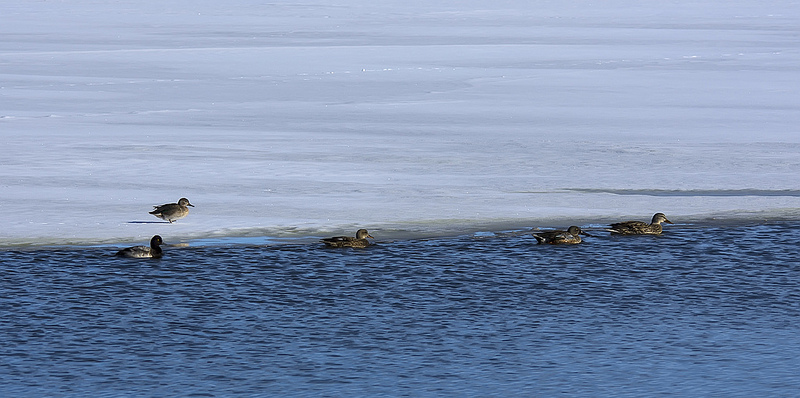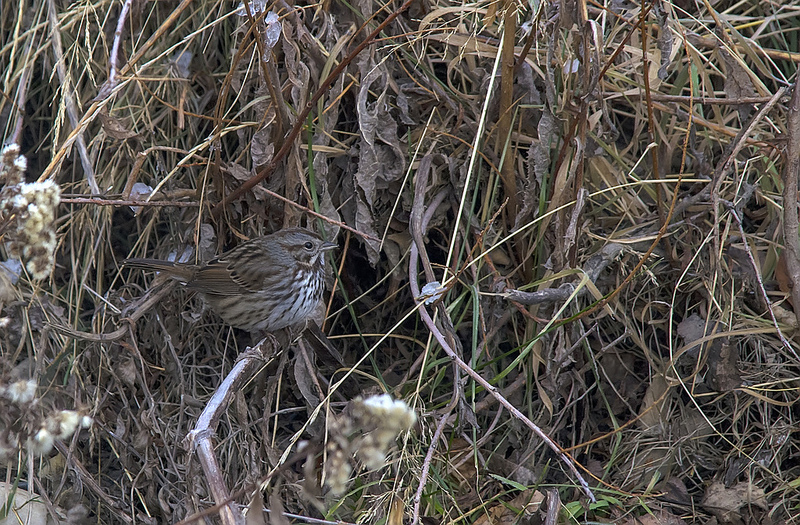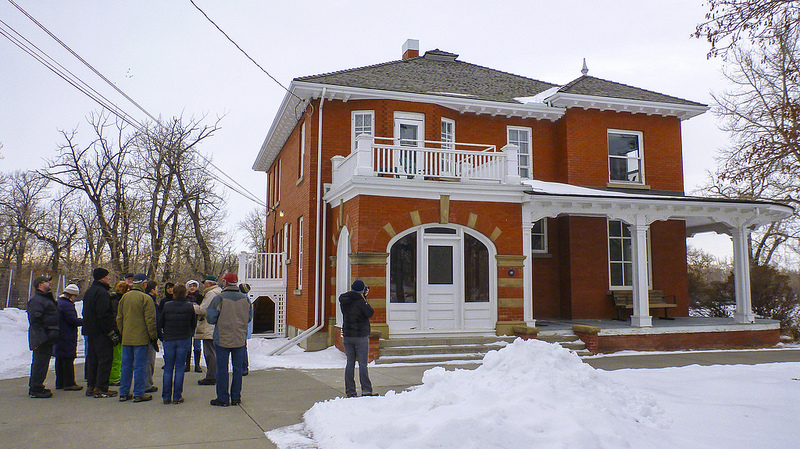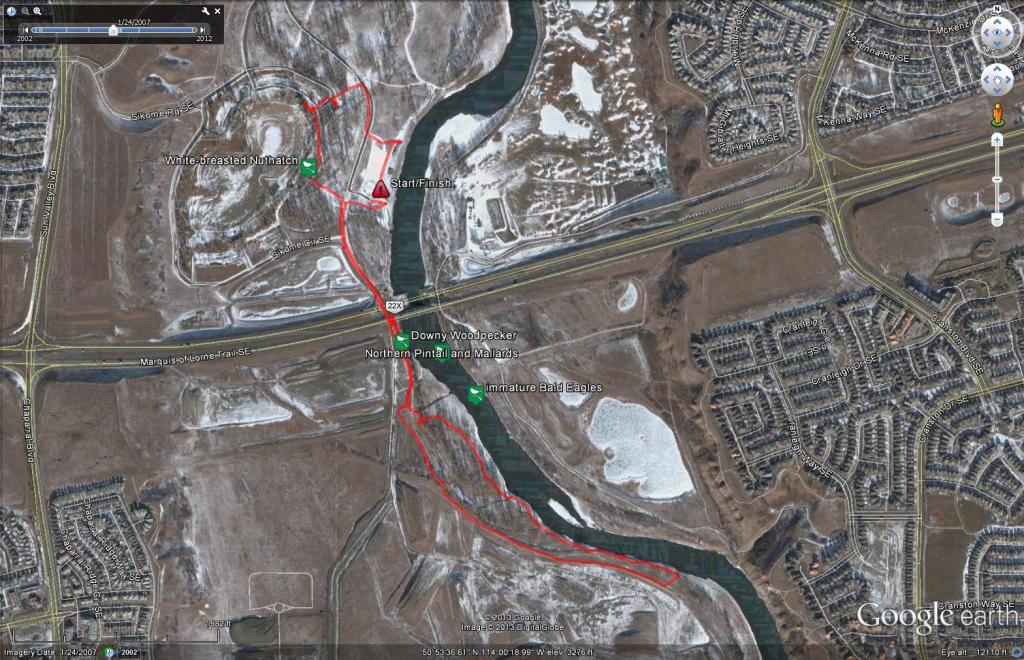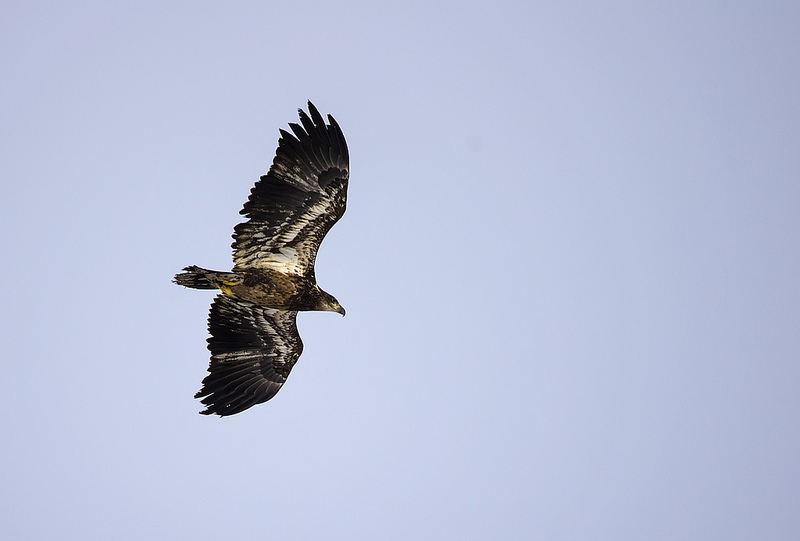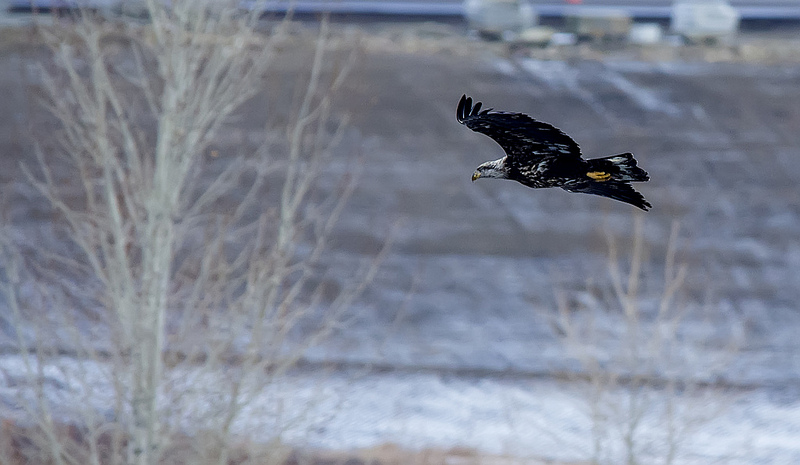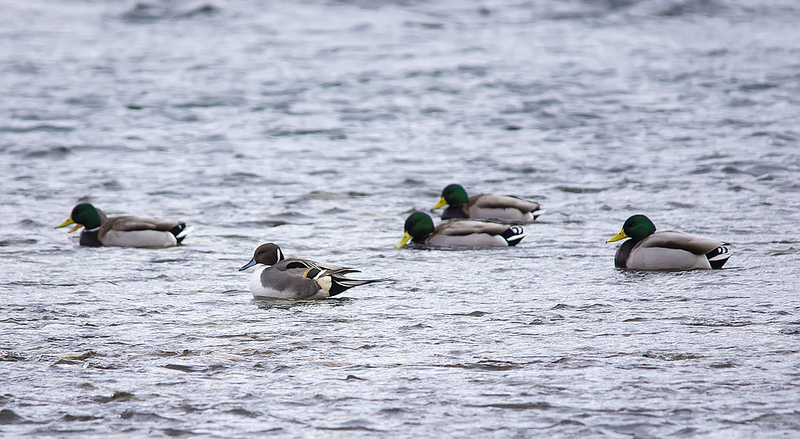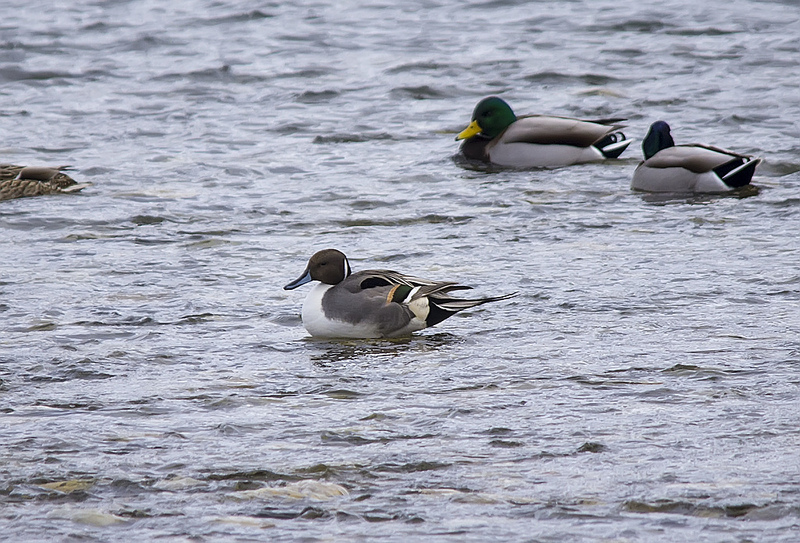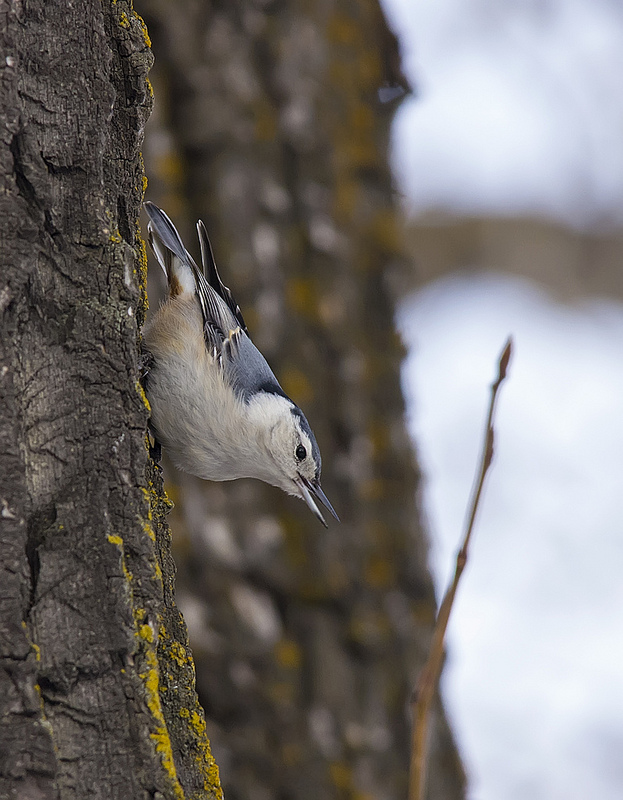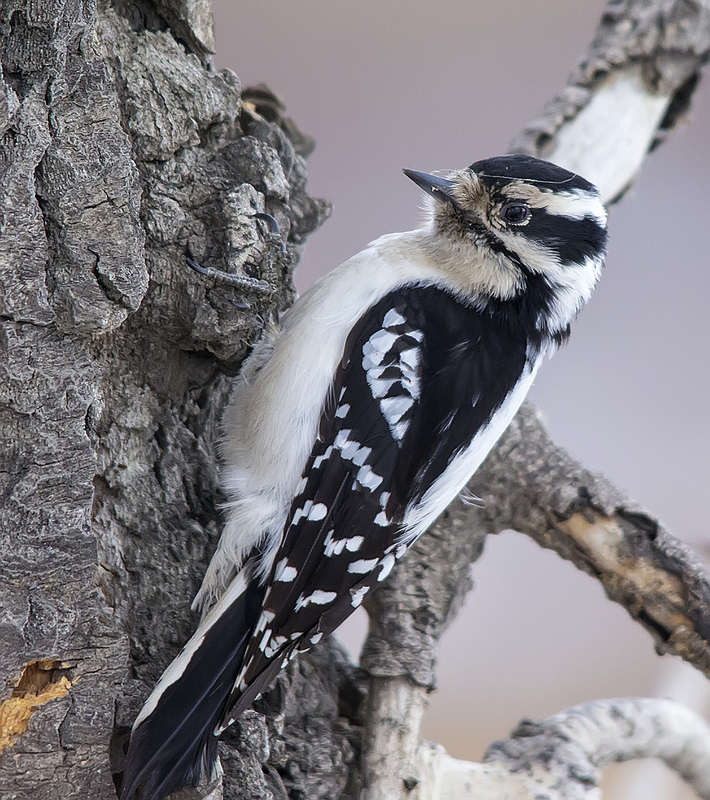Posted by Dan Arndt
And so another birding course comes to a close, but not without a few nice additions to sound out the closing bell. Our return to the Weaselhead was somewhat out of necessity, as our original plan was to look out over the Glenmore Reservoir, which has typically thawed quite a bit more than this year. Unfortunately, due to the persistent cold in Calgary this winter, and also due to a few weeks of well below freezing temperatures, the reservoir, proper remained frozen, while at least two of the channels of the Elbow River that feed into it were at least somewhat open, allowing for some, but not all, of the expected migrants to return. After a brief foray into the river valley south of the river, and with a few surprises down there as well, we returned to the trails of North Glenmore Park to look out over the reservoir and spot a few other new arrivals.
We started our Easter Sunday off with a sermon. Gus began with a speech detailing, in extreme Coles Notes format, how a series of steps brought both us, and Swans, to be here on Earth today, and how our ancestry is shared all the way back to the very first life, some 3.6 billion years ago. It was a great sentiment, and an awesome start to the day. It almost seemed like the speech drew in our main target species for the day, who flew in from the west as we reached the viewpoint, and over to the reservoir.
Heading down to the first feeders, we were greeted with yet another sign of spring with a pair of Least Chipmunks foraging under one of the feeders, while Common Redpolls munched away on the seeds above.
With the sounds of American Robins and Northern Flickers calling, we continued on our way, stopping at the feeding stations at the bottom of the hill in search of American Tree Sparrows, which we did manage to find (but were far too quick for me to photograph), but we did spot this immature male Pine Grosbeak singing from the treetops, along with a Hoary Redpoll in a small flock of Common Redpolls!
As we reached the bridge, we were welcomed by the calls of a number of Blue Jays, and in the distance we saw a pair of male Hooded Mergansers on the river.
On our walk in around the lower paths in the Weaselhead, we found a good number of Black-capped Chickadees and Red-breasted Nuthatches, but the Bohemian Waxwings were almost entirely absent, with this sole representative flying about here and there, almost in search of his fellows.
As our group pushed on, a few of us held back at a slightly unfamiliar call, which we quickly narrowed down as the call of a Dark-eyed Junco. A few of them were calling from the nearby spruce trees, well below the lone Bohemian Waxwing.
The rest of our walk was almost entirely absent of photos, both due to the absence of photo opportunities with the birds we saw and heard, but also due to the distances involved. Hopefully this week I’ll receive our loaner Swarovski ATX 85mm Spotting Scope that Swarovski Optik has graciously allowed me to review for them over the next little while. I’ve seen some of the results from this scope when mounted on a Pentax K-5, and I know it will come in handy for those long distance shots. But I digress…
We did happen upon a male Ruffed Grouse drumming near the river bank, and a few of us stayed behind to track it down, spotting it briefly on the log that it was drumming on before it flushed. As we headed back up the hill to look out over the reservoir, we happened upon a larger flock of Dark-eyed Juncos in the trees, a few Boreal Chickadees, and a Golden-crowned Kinglet. From the observation points on the ridge, we found a pair of Lesser Scaup, a male and female Hooded Merganser, and even an extremely early male Ruddy Duck in one of the channels.
Next week marks the beginning of our Spring course, and maybe a little bit of a different approach to these blog posts… stay tuned!
